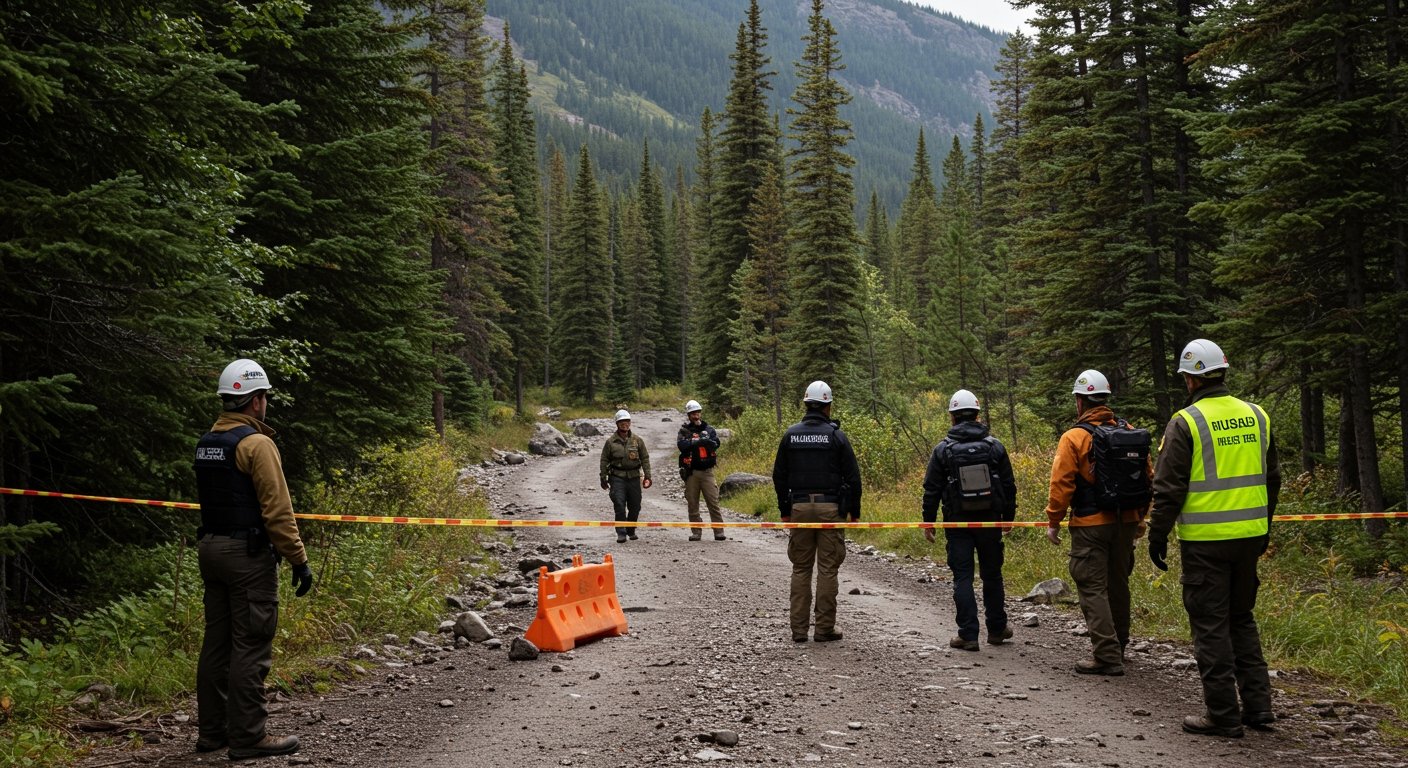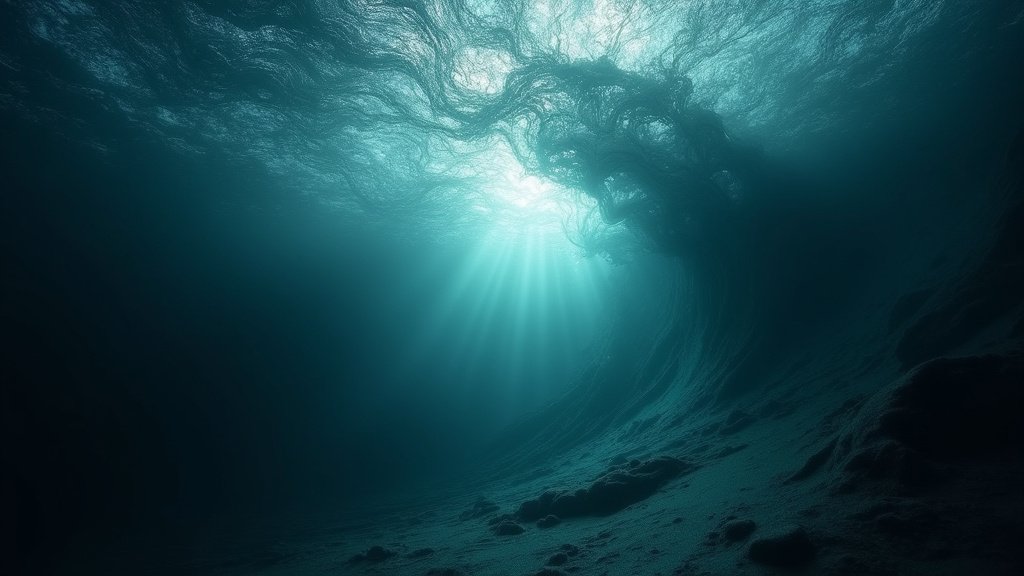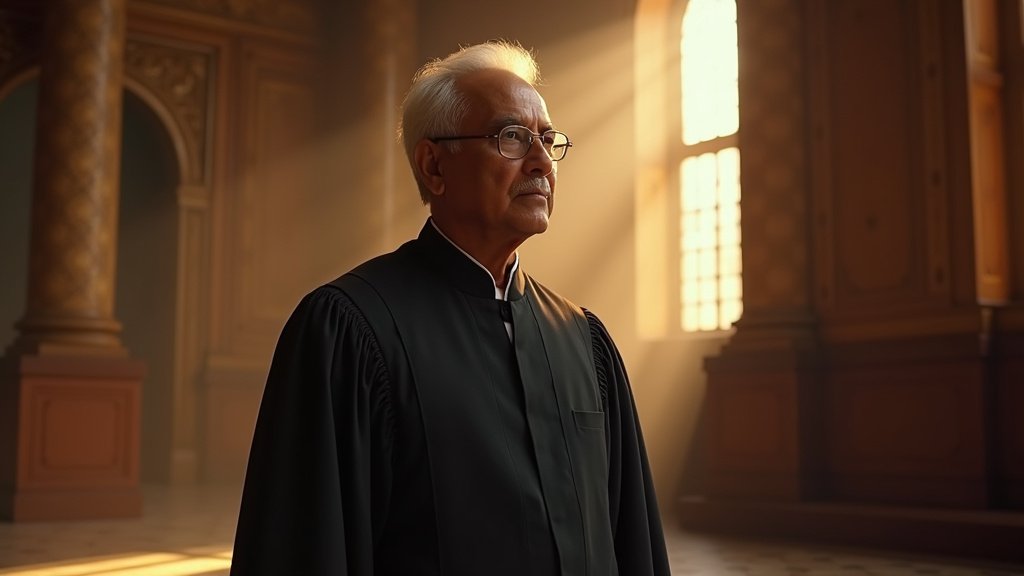Tragedy Strikes Banff National Park as Fatal Rockfall Claims Life Near Bow Glacier Falls
An unexpected and deadly rockfall occurred in Banff National Park on Wednesday, June 19, 2025, resulting in one fatality and injuring three others. The incident, which took place near the popular Bow Glacier Falls trail around 1:30 p.m. local time, prompted an immediate and extensive emergency response involving multiple agencies in one of Canada’s most renowned mountain parks.
The area near Bow Glacier Falls, accessible from the scenic Bow Lake, is a popular destination for hikers drawn to its stunning glacial landscapes and cascading waterfalls. Visitors frequent the trail that leads towards the base of the falls, offering dramatic views of the surrounding peaks and the headwall of the Bow Valley. It was in this setting that the tragic event unfolded when a significant section of the rock face above a hiking trail suddenly detached.
This catastrophic collapse sent rock and debris cascading down the steep slope without warning. The sudden rockfall impacted several groups of hikers who were on or in close proximity to the trail at that moment. The unforeseen and rapid nature of the geological event left little time for those in its path to react, leading directly to the casualties among park visitors enjoying a day outdoors.
Responding swiftly to the emergency call were highly specialized Parks Canada visitor safety teams. These experts, renowned for their technical skills and experience in complex rescues within challenging mountainous environments, were immediately dispatched to the remote location. They were quickly joined by a broader network of essential emergency services, highlighting the collaborative nature of large-scale rescue operations in national parks.
Multi-Agency Response and Critical Evacuation
The coordinated emergency response involved personnel from the Royal Canadian Mounted Police (RCMP), who assisted with site security and initial response coordination, local fire departments providing essential ground support, paramedics offering urgent medical care, and the critical air support provided by STARS air ambulance. The combination of ground and air assets was vital for effectively managing the incident site and accessing those in need in the rugged terrain.
Emergency crews faced difficult conditions upon arrival, including potential instability at the rockfall site, while working against time to locate, assess, and assist those affected. Their immediate priorities were providing urgent medical aid to the injured and carefully undertaking the recovery of the individual who tragically lost their life at the scene.
The three injured individuals received initial stabilization and medical attention from paramedics at the site. Given the remoteness of the location and the potential severity of their injuries sustained during the rockfall, a rapid and efficient evacuation was paramount. The injured hikers were expertly transported from the site using a combination of both ground ambulance and STARS air ambulance resources, ensuring they received timely advanced medical care.
All three injured individuals were subsequently transported to the Foothills Medical Centre in Calgary. As a major regional trauma centre, Foothills Medical Centre is equipped to handle complex medical cases, underscoring the serious nature of the injuries sustained by the hikers in the incident. The coordinated evacuation effort by ground and air ambulance highlights the crucial partnership between Parks Canada, regional health services, and emergency responders in managing incidents in remote backcountry settings.
Ongoing Search Operations and Area Restrictions
Following the immediate rescue and evacuation phases, authorities shifted focus to conducting thorough search operations. These efforts were initiated to address concerns about potential missing individuals who might have been in the affected area at the time of the rockfall. Parks Canada safety teams, supported by personnel from their partner agencies, commenced a methodical search of the immediate impact zone and surrounding areas.
Operating in a landscape still potentially hazardous due to the risk of further instability, these search operations for potential missing individuals are ongoing. This demonstrates the unwavering commitment of authorities to account for everyone who might have been in the vicinity when the rockfall occurred, providing reassurance to concerned families and the public.
In the immediate aftermath of the tragedy and to ensure the safety of both emergency responders and the public, significant access restrictions were quickly imposed throughout the area. Bow Lake, a central hub for visitor activity in this section of Banff National Park and the primary access point to the trail system leading towards Bow Glacier Falls, has been closed to all visitors. This closure encompasses the lake itself, nearby day-use areas, and all trailheads accessing the rockfall area.
Furthermore, a vital no-fly zone has been established over the incident site and surrounding airspace. This restriction is absolutely essential for maintaining a safe and clear operating environment for search and rescue aircraft, including helicopters and planes involved in the emergency response. It prevents unauthorized private or commercial flights from interfering with critical aerial operations or potentially endangering themselves or personnel on the ground.
Official Condolences and Reminder of Natural Hazards
The tragic incident elicited heartfelt responses and condolences from prominent government and park officials, acknowledging the severity of the event and its impact.
Ron Hallman, President and CEO of Parks Canada, conveyed his deepest sympathies to those affected. “On behalf of the Parks Canada team, I extend our deepest condolences to the family and friends of the person who died in this tragic incident,” Mr. Hallman stated. He added, “Our thoughts are also with those who were injured, and we wish them a full recovery. I want to express my sincere gratitude to the Parks Canada visitor safety teams and all responding agencies for their professionalism, expertise, and dedication in this complex rescue operation under challenging circumstances.”
The Honourable Eleanor Olszewski, Minister of Emergency Management, also commented on the incident and praised the coordinated efforts of responders. “This is a tragic event that has occurred in one of Canada’s most beautiful national parks, impacting visitors enjoying the outdoors,” Minister Olszewski said. “My thoughts are with the victims, their families, and friends during this incredibly difficult time. I commend the bravery, skill, and coordination demonstrated by all the emergency responders from Parks Canada, RCMP, STARS, local fire services, and paramedics who worked tirelessly and bravely in challenging conditions at the scene.”
Alberta Premier Danielle Smith echoed these sentiments of sorrow and support. “Our hearts go out to the family and friends of the individual who tragically lost their life near Bow Glacier Falls and to those who were injured and are now receiving medical care,” Premier Smith stated. “This incident is a somber reminder of the power and unpredictable nature of the mountain environment. We are incredibly grateful for the swift and courageous actions of all the emergency services personnel who responded to this critical situation in Banff National Park.”
While investigations into the precise geological triggers of the rockfall are standard procedure following such events, the incident serves as a stark and tragic reminder of the inherent risks associated with venturing into natural mountain environments. Geological processes like rockfalls are natural phenomena in areas like the Canadian Rockies and can occur without warning. Parks Canada consistently advises visitors to be aware of potential hazards, including changing conditions and geological instability, and to check local advisories.
The closure of Bow Lake and the surrounding area, along with the no-fly zone, will remain in effect as authorities continue their essential work at the site, including ongoing search operations and assessing the stability of the rock slopes. Further updates on the status of the area and the progression of operations will be provided by Parks Canada as more information becomes available and conditions change.





